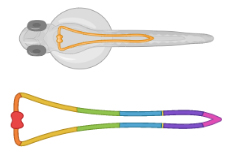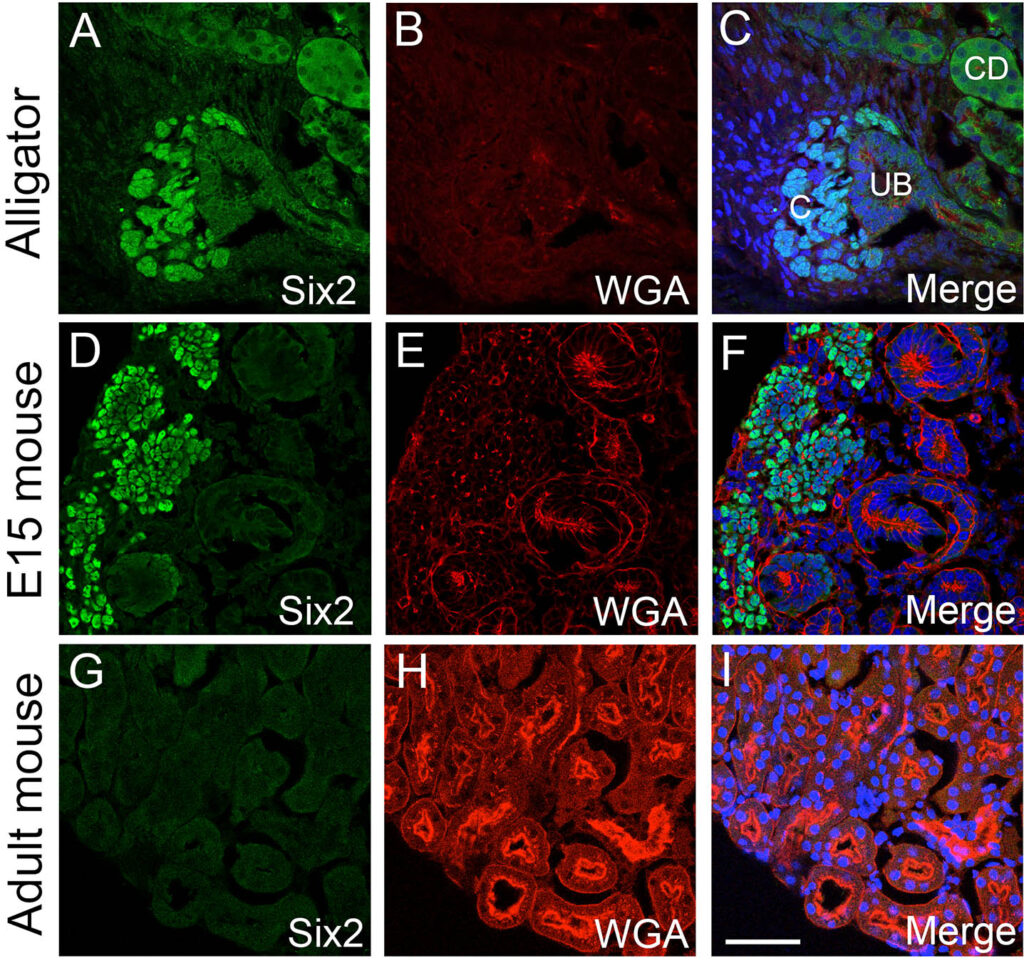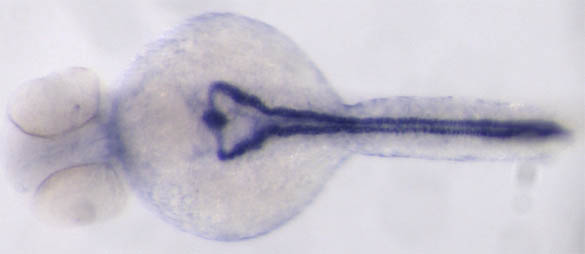The Camarata lab studies comparative and evolutionary mechanisms of kidney development with a focus on progenitor cell maintenance and cell differentiation. We use the zebrafish pronephros as a model system to study genetic mechanisms of cell differentiation. Complementing this work, we take advantage of the presence of continual nephrogenesis in reptiles, such as the American alligator and red-eared slider, to investigate evolutionary conserved and divergent pathways of kidney development.

Project: Conservation of Six2 function in nephron development. The zebrafish embryo possesses a pronephric kidney which consists of two nephron epithelial tubules. The segmentation and function of the pronephric tubules is highly conserved to that of humans, consisting of a glomerulus (red), proximal convoluted tubule (yellow), proximal straight tubule (green), distal tubule (blue and purple), and collecting segment (pink). We are currently using this system to determine the function of the zebrafish Six2 genes in pronephric cell differentiation.

Project: Comparative kidney ontogeny in reptiles. Mammals, birds, and reptiles share the same definitive kidney structure called the metanephric kidney. However, almost all of our knowledge regarding metanephric kidney development comes from mammals, specifically mouse and human. A great deal of diversity in anatomical form is found with the kidney in mammals, birds, and reptiles. What leads to the diversity in kidney form remains unknown. We are using different reptile models, such as the alligator and turtle, to explore comparative kidney development. This research will provide insight into the conserved evolutionary mechanisms of kidney organogenesis as well as how structural diversity develops.

Project: Characterizing continual nephrogenesis in reptiles. Reptiles (non-avian reptiles such as lizards and snakes) possess a metanephric kidney similar in complexity to mammals. In mammals, a finite number of functional units called the nephron form during embryonic development. Therefore, mammals, including humans are born with a certain number of nephrons which cannot be replaced or regenerated when damaged or lost from injury or disease. Reptiles on the other hand, continually grow new nephrons through out their lifespan. This is due to the presence of kidney progenitor cell populations in the adult organ, a feature not found in mammals. Currently we are characterizing the mechanisms responsible for maintaining kidney progenitor cell populations in reptiles.


